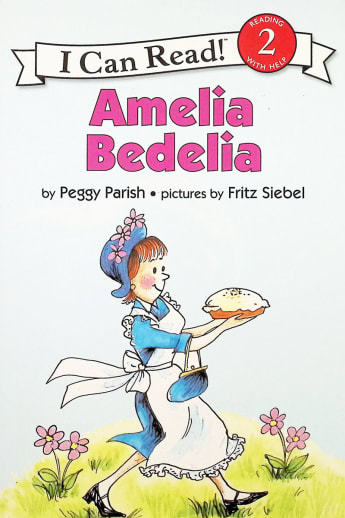Amelia Bedelia (I Can Read Level 2)
Description
Learn to read with the classic Amelia Bedelia! Ever since Amelia Bedelia made her debut in 1963, young readers have been laughing out loud at the antics of this literal-minded but charming housekeeper.
From dressing the chicken to drawing the drapes, Amelia Bedelia does exactly what Mr. and Mrs. Rogers tell her to do. If things get a bit mixed up, well, that's okay. When Amelia Bedelia is involved, everything always turns out perfectly in the end!
This Level 2 I Can Read is perfect for kids who read on their own but still need a little help. Whether shared at home or in a classroom, the engaging stories, longer sentences, and language play of Level Two books are proven to help kids take their next steps toward reading success.
By Veritas Press, these comprehension guides are for beginning readers. Each guide covers fourteen favorite children's books, like Madeline, Miss Nelson is Missing, A New Coat for Anna, Amelia Bedelia, Caps for Sale, Billy and Blaze, Frog and Toad, and more. It is recommended to spend at least three or four days on each book, with the child reading it to you at least twice and completing the comprehension activities. After a "to the teacher" page, the rest of the book is simply packed with the activity worksheets. These include comprehension questions, comprehension activities, art activities, and handwriting exercises. There are around 5-10 activities for each book covered. Each activity centers on material from the book to help children retain what they've read. The books are arranged in order of difficulty, but you can work through them in order you want. The books are 148 and 170 pgs respectively. Reproducible. An additional volume in this series covers 8 more books for youngsters: Danny and the Dinosaur, Mouse Soup>, My Father's Dragon, Now We are Six, Encyclopedia Brown: Boy Detective, Hundred Dresses, Owls in the Family, and Sarah Plain and Tall. The format is similar to the other two volumes, though the length of each activity section ranges from 3 to 16 pages. - Melissa
| Product Format: | Softcover Book |
|---|---|
| Grades: | K-4 |
| Brand: | HarperCollins |
| Author: | Peggy Parish |
| ISBN: | 9780064441551 |
| Length in Inches: | 9 |
| Width in Inches: | 6 |
| Height in Inches: | 0.1875 |
| Weight in Pounds: | 0.25 |
| Ages: | 4 - 8 |
| Edition: | Illustrated |
| Illustrated by: | Fritz Siebel |
| Pages: | 64 |
| Publication Date: | 9/1/1992 |

